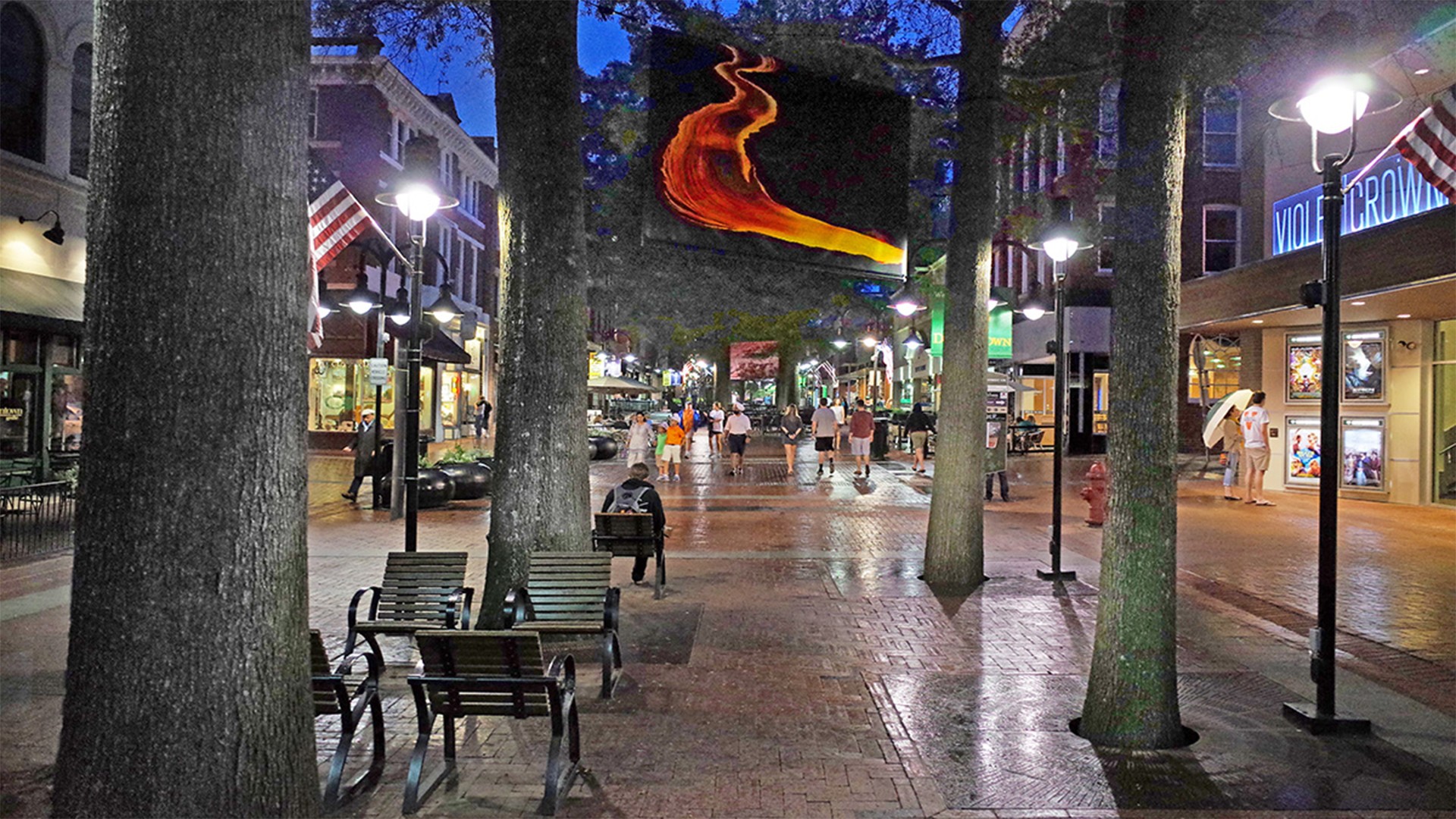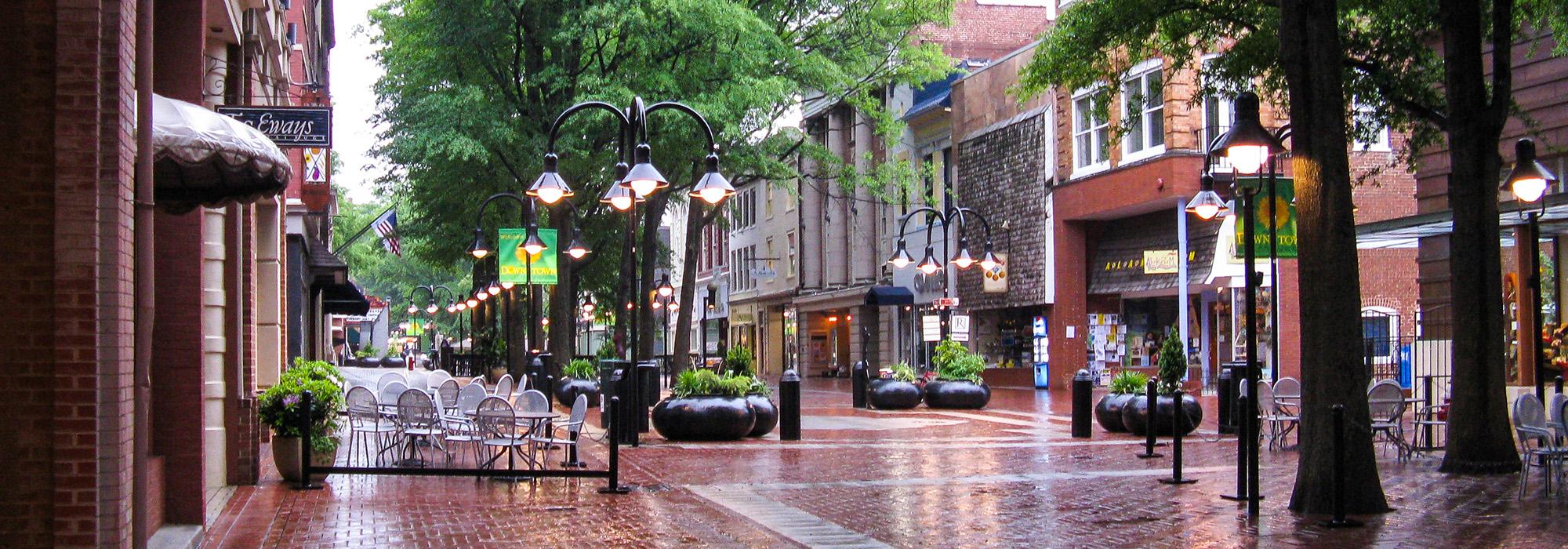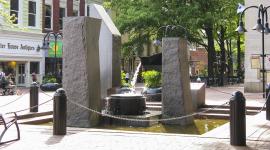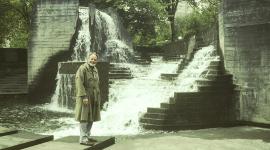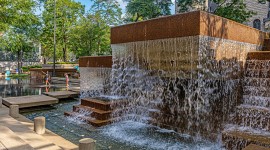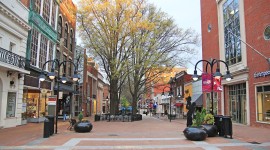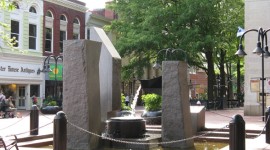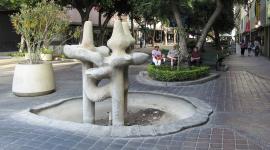Charlottesville Mall Listed in National Register of Historic Places
On February 5, 2024, the Charlottesville Downtown Mall Historic District was listed in the National Register of Historic Places. Spanning eight city blocks, the pedestrian mall was designed by Lawrence Halprin & Associates in the mid-1970s to revitalize the downtown community.
The Cultural Landscape Foundation (TCLF) enrolled the Charlottesville Mall in its Landslide program of at-risk landscapes in 2008 and again in 2016, on the occasion of the 100th anniversary of Lawrence Halprin’s birth. Over the years the steadfast support of Professor Elizabeth K. Meyer of the University of Virginia (UVA) has been foundational to myriad collaborations between UVA and TCLF advocating for responsible stewardship decisions at the Downtown Mall. In 2023 those efforts bore fruit when the mall was added to the Virginia Landmarks Register and is now followed with this National recognition. A chronicle of the Mall’s expanding recognition has been chronicled in TCLF’s report and digital exhibition, Landscape 2023: 25 Years/25 Saved which contains a quintet of Halprin success stories.
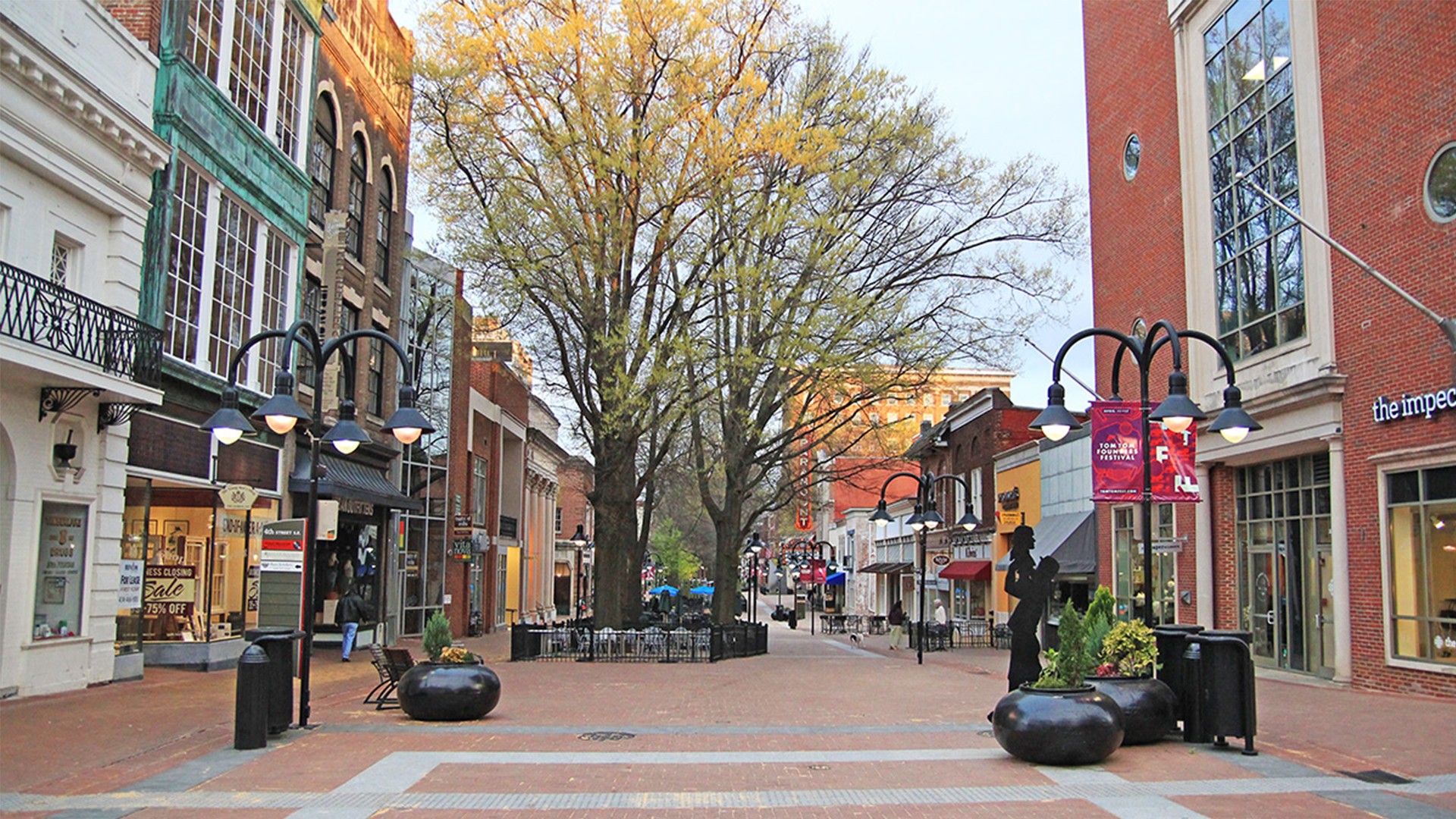
The Charlottesville Mall is noteworthy not only for its subtle and innovative design solutions, but also for incorporating community workshops into the design process itself. As the National Register of Historic Places nomination form notes in the “Statement of Significance Summary Paragraph,” the mall is “an excellent example of Halprin’s approach to public space design as choreography of movement, providing for continuous flow of people while also offering areas for reflection, respite, and social interaction, as well as opportunities for spontaneity and improvisation.” The statement of significance continues, “the Mall illustrates Halprin’s method of eliciting value and usage ideas from the community in his Take Part workshops and incorporating this input into his firm’s designs while generating consensus to support the effort. The Mall manifests Halprin’s utilization of a simple palette of materials and features based in part on local precedents to create a series of interconnected spaces that act as a stage for public life.”
News of the designation was welcomed by landscape architects, preservation professionals, advocates and members of the Charlottesville community, including Professor Meyer. In an email to TCLF Meyer writes, “Fifteen years ago, Halprin’s pedestrian Mall in Charlottesville was under appreciated as one of the best everyday public spaces in America. Thanks to the NEA funded archival research, oral history and publications undertaken by UVA A-School community and the national advocacy of TCLF, that is no longer the case…It’s heartening to see the City staff, community members and their consultants, like Wolf Josey, collectively considering how to care for the Mall’s fifty-year-old willow oaks and to counter the slow privatization of the street.”
